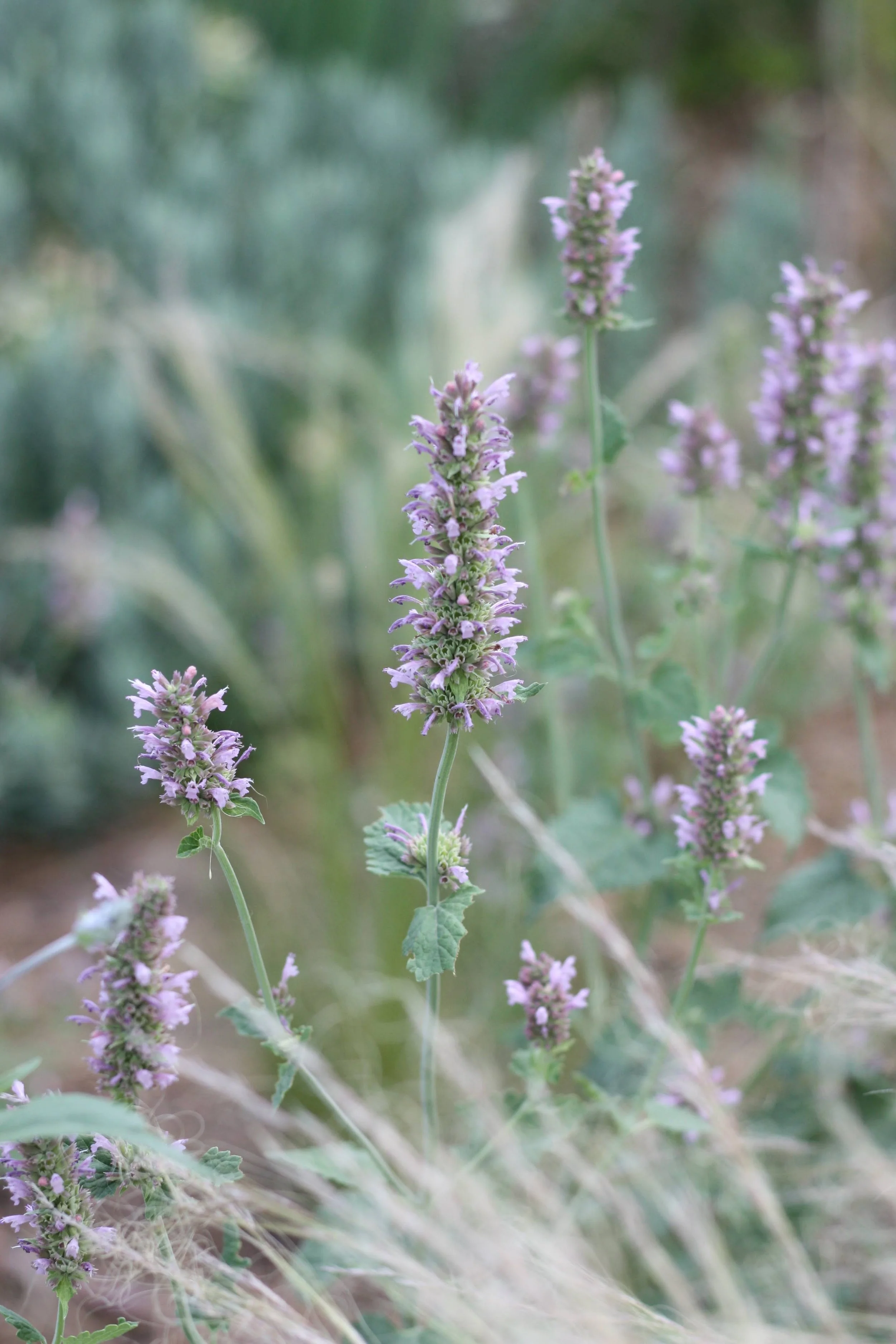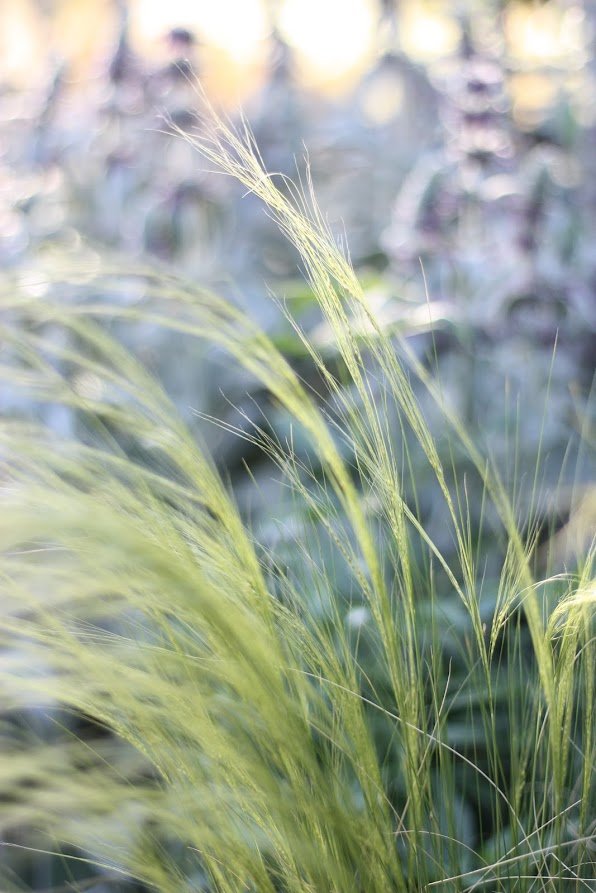How to Plant a Prairie, Part 2: What a Prairie Planting is Not
If you talk to people about a prairie or a native planting, you will inevitably run into someone who will think that it’s going to look weedy or unkempt. Generally we’ve found these to be people who like lawns and colored mulch and meatball-pruned shrubs more than actual plants and gardening, but it’s understandable because there are some prairie and native plantings that look weedy and terrible.
A prairie planting is actually a bit more intentional than most people might initially think, and requires some work and maintenance (sorry to burst your bubble if you thought otherwise) but it’s not a tremendous amount of work in comparison to a more traditional garden.
In other words, I’m here to bust some myths and misconceptions about planting a prairie. Let’s get started…
A Prairie Planting Requires Planning
Contrary to popular belief, you can’t just sprinkle seeds willy-nilly onto the ground and expect it to look amazing. While this sounds like it would be the way to go, what you’ll find is that it’s going to be hard to distinguish your desired prairie plants from weeds. What you thought were blanket flower seedlings actually turn out to be thistles, and now you’re going to have to go in and individually weed things out and it gets very tempting to just give up on the bed entirely (ask me how I know!).
Don’t get me wrong, I have directly seeded into the ground with decent results, but only after the ground has been properly prepared and weeds have been dealt with and I’m only sowing a single species (which makes it easy to eliminate anything that is not the specific species that I’m trying to grow).
A prairie planting also requires using the correct mix of plant varieties to create the prairie look. I’ll go into more detail in regards to what varieties to plant later on, but you should have a good mix of grasses and flowering plants and foliage and structural plants to create a good variety of color and texture.
A Prairie Planting Shouldn’t Look Messy
While each person should garden in the way that makes them most happy and fits them the best, if you’re wanting your prairie to look more like an intentional way of gardening and less like a random mishmash of weeds that might get the city called on you, you have to keep things relatively clean and orderly.
You know those prairie plantings by Piet Oudolf? Although they look extremely natural and are inspired by plantings out in nature, they are anything but. Behind every one of those plantings is a carefully constructed design with plants being specifically placed in areas where they will best pair with their neighboring plants and be visually attractive.
It’s a lot of planning and designing to create a look that feels very carefree and natural - similar to how a “no-makeup look” is actually quite a lot of makeup and work - but the end result not only is easier to maintain and keep track of but also will be more visually pleasurable.
The human eye prefers a mix of order and chaos. Too much chaos and your planting will seem messy, disorderly and the eye won’t be able to follow or be attracted to anything at all. Too much order and your planting will appear sterile - or worse, lacking in imagination or inspiration. You need both sides of the coin in order to succeed and create something that is visually appealing.
Gardening itself is the sign of human intervention - the true non-garden planting looks like something that would have occurred during the zombie apocalypse and can be viewed in urban lots that have invasive weedy species that are anything but esthetically pleasant - so don’t worry about the fact that a structure planting will interfere with it being natural or beneficial.
A Prairie Planting Should be Well-Maintained
Okay, so what I mentioned previously in regards to a prairie being low-maintenance is still true. Compared to a lawn or a mixed herbaceous border or a cutting garden, a prairie is much much easier and requires far less maintenance comparatively.
However, that doesn’t mean a prairie planting is no maintenance. Anything, even lava rocks and mulch still requires maintenance, and a prairie planting is no different.
Similar to any other garden bed, things can happen. Weed seeds will inevitably make their way in and you’ll have to remove weeds regularly (we do a weeding session in spring, summer and fall and on occasion if something starts to get out of hand) you’ll need to occasionally trim or prune large plants that threaten to spill over onto pathways or that have been toppled due to strong wind or rain, and you’ll need to replace plants that die off (purple coneflower for example will start to die out after three years or so, which is why we start a new tray of plants every year).
Your pathways should be kept clean, dead plants should be removed, and of course there is occasionally clean-up that needs to be done. Again, this is far less than what any other traditional garden would require, but it still should be maintained. A poorly maintained prairie planting can start to look really weird and out-of-place if not maintained. Just a little bit of clean-up and touch-ups are usually required, and you’ll more than reap the benefits in having a clean and tidy planting.
A Prairie Planting Should Have Some Wildness To It
On the other hand, a true prairie planting should have an element of wilderness to it. Our mixed herbaceous border for example, has a lot of similar plants that are tucked throughout it - rudbeckia, purple coneflower, ornamental grasses, bee balm and ironweed for example - but it is most definitely not a prairie and appears as a traditional garden bed.
I think that the addition of wilderness is important to add because it creates a sense of freedom and ease in the garden that is a high contrast to the order and predictability of our own personal lives as humans in the twenty-first century. While we spend a lot of time ensuring that lives stay as normal and stable as possible, there is a part of us that will always be attracted to the wild parts of the world - including our gardens.
You can add wildness to your prairie planting by allowing some of the wilder, rangier plants to present their true nature. Big billowy grasses throwing up their veils of seed heads, creating an air of mystery and a tantalizing visual motion, gigantic sunflower-type plants like compass plant and Maximillian sunflowers adding scale and height, allowing bee balm and other flowers to reseed and scatter themselves throughout a planting - these are all ways in which we can keep the eye and mind of the viewer moving and being delighted at these small details.
A prairie planting that doesn’t have an element of wildness just doesn’t reach it still potential - it looks like a bunch of plants assembled together as opposed to a composition or something to be experienced the way a prairie should be.
It Shouldn’t be Majority Mulch or “Hardscape”
Prairie plantings are all about the plants, and you can make or break the effect by a lack of plants and a focus on what I would term the “hard scaping”
Don’t get me wrong, I love a good hardscape design element in a garden. Garden benches, fire pits, fences, pathways, screens, ponds and fountains are all amazing ways to anchor the garden and anchor the view.
However, I think we’re seeing a heavier emphasis these days being put on these hardscape elements and not enough emphasis being put on the plants. It comes from that whole movement of treating the exterior the same as the interior, which works well to get people outside but has the negative side-effect of treating plants similar to interior tchotchkes and interchangeable throw pillows - a side-thought or finishing embellish of the garden as opposed to the main focus.
A prairie planting shouldn’t have plants placed three feet apart with mulch smothering the ground between the plants. It’s just going to look like three rudbeckia plants, three little bluestem grasses and three goldenrod plants planted into a garden bed and never an actual living, breathing, prairie planting.
Similarly, planting three Indian grass into a garden bed between the back patio area and the fire pit isn’t going to give you any enjoyment either - you’ll need to pack that garden bed full of plants to give you a prairie planting experience.
The more plants you can pack into your area, the more “prairie-esque” your planting will appear to be. And given that these plants generally grow pretty quickly, you’ll be able to enjoy your prairie earlier.




